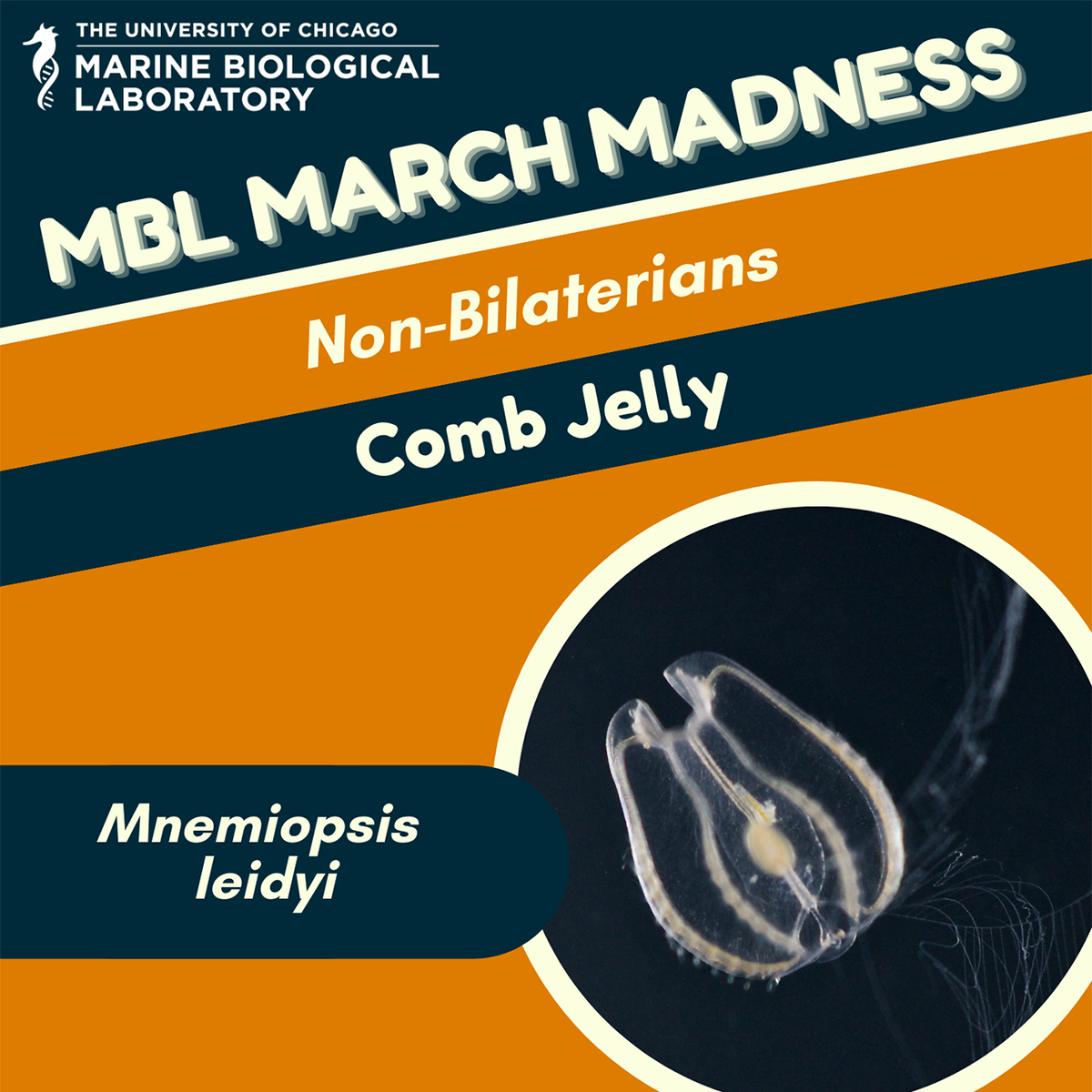MBL March Madness: Comb Jelly


Since MBL opened its doors in 1888, scientists and students have been studying the interesting and unique biology of the ctenophore Mnemiopsis leidyi. During the summer months Mnemiopsis leidyi can be found in Eel Pond, at the NOAA jetty, and in other nearby harbors. Experimental embryologists at MBL have a long history of using Mnemiopsis for cell lineage analyses, facilitated by the rapid and synchronous development of their optically transparent embryos. MBL researchers have characterized aspects of Mnemiopsis biomechanics that may underly their invasive success as well as how ctenophores use their namesake giant cilia for locomotion. Insights from sequencing the whole genome of Mnemiopsis leidyi has served to highlight the early branching relationship of ctenophores relative to other animal phyla and driven a resurgence of interest in ctenophore biology.
Cool facts
- It is native to the western Atlantic but has become a notorious invasive coastal species in the Black, Caspian, Mediterranean and North Seas of Europe and Western Asia.
- It is the largest animal known to use cilia for locomotion.
- Mnemiopsis, unlike cnidarians with stinging cells, catch prey with sticky glue-like adhesive cells on their tentacles.
(ID Card Photo Credit: William E. Browne | Equipment: Canon 100mm Macro)
Select Publications
Colin, S.P., Costello, J.H., Sutherland, K.R., Gemmel, B.J., Dabiri, J.O. and Du Clos, K.T. (2020) The role of suction thrust in the metachronal paddles of swimming invertebrates. Scientific Reports. doi.org/10.1038/s41598-020-74745-y
Gemmell BJ, Colin SP, Costello JH and Dabiri JO (2015) Suction-based propulsion as a basis for efficient animal swimming. Nature Communications: doi.org/10.1038/ncomms9790
Division: Non-Bilateria
While bilaterian animals have a distinct front, back, top, and bottom, non-bilaterian organisms lack that symmetry. Non-bilaterian animals include sponges, jellyfish, corals, comb jellies, sea anemones, and placazoa (simple, free-floating multicellular marine organisms). Learn more about the Non-Bilaterian Division.
Meet the Other Non-Bilaterian Organisms
-
- Northern Star Coral (Astrangia poculata)
- Jellyfish (Clytia hemisphaerica)
- Stentor (Stentor coeruleus)
What is MBL March Madness?
Based on the March Madness NCAA basketball tournament, during MBL March Madness, popular MBL organisms face off for your votes. YOU have the opportunity to decide what organism is crowned victorious by voting for your favorite organisms in a series of head-to-head match-ups. Voting will take place on the MBL social media channels from March 29 - April 7. Learn more and download a bracket at mbl.edu/march-madness.